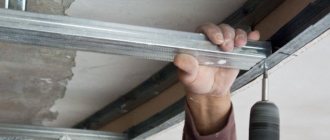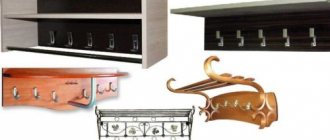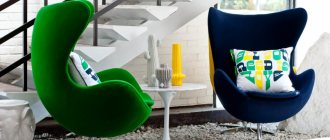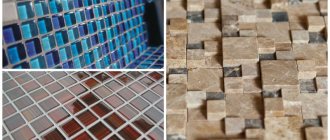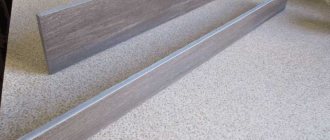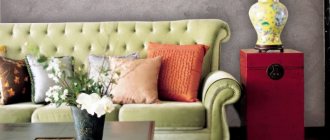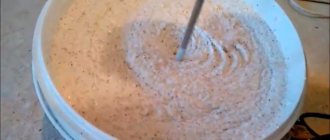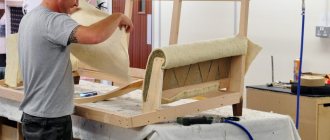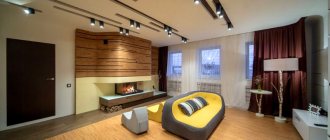No construction or production facility is complete without fasteners. They are used when fastening small parts and when fixing large blocks that are under heavy load. Depending on the purpose and scope of application, fasteners are divided into categories. The state standard, however, describes only a small part of what is presented on the market. In this article we will talk about what fasteners are, what categories they are divided into and in what areas they are used.
Basic classifications
There is a generally accepted system for classifying fasteners:
- high-strength threaded products;
- fasteners for mass use;
- fasteners for shockless fixation and one-sided installation;
- elements for hermetic structures;
- fasteners necessary for fastening polymer composite materials.
Note that the classification is conditional, and it is impossible to unambiguously fit all hardware to these parameters. The simplest example is riveting. The peculiarities of its design mean that it is categorized as a fastener for impact-free, one-sided fixation, but there are products designed or capable of fastening polymer and composite materials, and this is another category from the list.
There are several other types of classification. For example, by type of construction. There are two sections here:
- detachable. That is, all fasteners consisting of two or more parts.
- and permanent ones, such as nails and rivets.
It also makes sense to separate hardware according to purpose. Some elements are designed to work in aggressive environments, such as underwater, while others are designed to work under high loads. That is, the same fastener can have different areas of application, and different technologies and materials are used for their manufacture.
For threaded connections, a division based on thread pitch also applies. A bolt of the same size can be either with a fine thread, that is, a large number of turns, or with a large one. And the last type of classification is by size. There is no strict standard prescribing specific fastener sizes, but there is a generally accepted system of standards. In this sense, it will not be possible to divide hardware into groups.
Nails
A nail, in the usual sense, is a piece of metal rod, sharpened on one side and flattened on the other. The main area of application is the connection of wooden elements, but nails cannot be clearly categorized as “mass-use fasteners”, since there are hardware designed for fastening polymers and composites. They differ both in design and in the materials used in their manufacture.
In fact, a nail is a very broad definition that includes several types of fasteners for various purposes:
- Building. A familiar nail in the classical sense. A metal rod with sharpening and a head without structural features.
- Screw. Has a screw thread along the entire length or part thereof. It can also be hammered and used to fasten wooden blocks subject to increased loads.
- Ruffy. It has small skirts along the entire length or part of it, reminiscent of thread turns, but not connected to each other. Used to connect elements exposed to moisture and deformation. Before driving, a hole of a smaller diameter is often drilled.
- Slate. Designed for fastening slate sheets. Design features include a larger diameter pressure cap and sometimes the presence of a rubber washer.
- Roofing. Designed for fastening roofing materials, and has a disproportionately large head, which ensures reliable fastening of soft coverings.
- Finish and with an oval head. A nail that is completely immersed when driven into the element being fastened. It is used for fixing decorative items, platbands and other things.
In addition, there are furniture fastening, shoe and wallpaper nails, but they have nothing to do with construction or production. Separately, it is necessary to say about nailer nails. They are used in nail guns. Structurally, they are practically the same, but are supplied in blocks connected to each other.
Installation technology
The shape of the panels is:
- rack and pinion;
- tiled;
- leafy.
Slatted panels with glass inserts
The first type comes with a tongue-and-groove locking connection, which simplifies the joining of sheets. Tile - cut square or rectangular panels.
The most common leaf species
The chassis are sheet metal and are used for various purposes. Fastened in three ways:
- on glue;
- using components;
- using lathing.
On glue
This installation is used to preserve the appearance of the sheet in order to hide the fasteners. Before deciding on this method, make sure that the wall is strong and intact.
It should not have flaking, loose elements. Wooden, concrete, brick bases are suitable. Drywall is unacceptable; the paper with which it is covered may come off. Whitewashed and painted walls are not suitable.
Leveling the walls so that unevenness does not show through. Brick and concrete walls are primed, this will increase the adhesion between the chipboard and the wall, and coated with an antiseptic to prevent the appearance of fungus.
The back side of the panels is treated with sandpaper. Afterwards they are glued. The glue is selected according to the wall material. The main thing is that there is no water in the composition. Sheets can be glued together.
For special components
This method requires profiles. The design is collapsible. Once the profiles are installed, the sheets are installed quickly. The profiles become part of the wall, giving it design. Profiles are:
- corner;
- starting;
- end;
- connecting.
Diagram of a corner profile
Corners are divided into external, internal, and universal, when one profile is suitable for any option. They come decorated or unpainted. The profile is made of aluminum. Starter ones are used for vertical installation of panels. Mounted near the floor or ceiling. The end ones are designed to hide the outer sides and are U-shaped. The connecting joints are made in the shape of the letter H for joining sheets.
This is what the intermediate profile looks like
The profile is installed on the wall, if it is flat, on a metal or wooden frame. The wall is treated with an antiseptic.
On the sheathing
Another way to attach chipboard is to use lathing. It is convenient to work with wooden blocks, they are easy to process, and it is easy to attach panels to them. They have good heat and sound insulation properties and are environmentally friendly. Lathing is used, if insulation is necessary, to hide engineering structures and electrical wiring if the wall is uneven.
The bars are installed perpendicular to the slabs; if the sheets are placed horizontally, the sheathing is made with a vertical beam, and vice versa. Step 50 cm. Each block is leveled; it is necessary that their height is the same. This is done using a cord, a rail, a profile.
Chipboard is fastened with self-tapping screws, nails, screws, depending on the sheathing. The distance between the fastenings is 30–40 cm. Large sheets are more convenient to fasten to the profile. Walls become especially smooth when using sheets with tongue-and-groove locks. The video provides some installation tricks and calculations:
Bolts and screws
Bolts and screws belong to the category of high-strength threaded fasteners. They are also often referred to as detachable types, which is not entirely true, since both a bolt and a screw can be screwed into both a nut and a thread already existing on the product being fastened. There is an opinion that the main difference between a bolt and a screw is the type of fastening: a bolt works exclusively in tandem with a nut, and a screw is screwed into a finished thread. This is an incorrect statement, since state standard number 27017-86 determines that both the first and second types of fasteners can be used both in conjunction with a nut and without it.
The same GOST gives a clear definition of the difference between these elements and it lies in the degree of load. A bolt is designed to operate under tensile and fracture loads, while a screw is designed to operate exclusively under tensile loads. Both the bolt and the screw can differ in size, thread pitch, and head shape. Since screws operate under heavy loads, their head design is most often shaped like a screwdriver. The form may differ, and very significantly. There is a certain classification of headboard shapes:
- Flat;
- Round;
- Mushroom-shaped;
- Secret;
- Semi-secret;
- Convex.
The types of splines also differ, and here everything is much more complicated, since many manufacturers use their own form. But the most common spline shapes are cross, straight and hexagon.
Bolts, due to their classification and standardization, are less diverse. Their headboard is most often hexagonal, designed to be tightened with a key, but there are also varieties for a screwdriver. The main area of application of bolts is fixing elements using the clamping method. They create a reliable connection on both sides, and resistance to loads is determined by the thread pitch and the size of the hardware.
Anchor fasteners
An anchor is a type of fastening to a wall or to foundations made of concrete, brick, natural stone, and other hard materials. Provides the creation of a fastening unit with high load-bearing capacity and reliable fixation.
The following types of anchors are available:
- Driven anchor. Used for fastening parts to solid bases using bolts and screws. Fixation is achieved using a release located inside the cone. Wedging can also be ensured by a special cone in the shank of the fastener.
- Metal frame. Used for installation in openings of brick and concrete walls, door and window frames. Locking is provided by a countersunk screw, which is screwed into the hole and draws a conical wedge into the anchor body.
- Anchor bolt. Wedging of the anchor is ensured by screwing a bolt into its body. Can be used for attaching various structural elements to brick, concrete, and natural stone foundations.
- Ceiling anchor. Used for attaching heavy suspended structures to the ceiling. The design is similar to an anchor bolt, except for the shape of the head.
- Lightweight anchor. Used for fastening lightweight structural elements on solid foundations. The anchor is wedged when the nut, which is located in its tail part, is tightened.
Screws and self-tapping screws
These two types of fasteners can be classified into the same category, since they have a similar design and scope of application. In essence, a self-tapping screw is the same screw, but in a modern design and with a number of advantages. So, to fix it with a screw, you must first drill a hole, and only then screw in the fasteners. The self-tapping screw, in some cases, copes with the drilling task itself and is screwed in without additional preparation of the seat. A screw, even one made of hardened steel, does not have a sharpening point on the threads, so even when using it to connect two wooden elements, you must first prepare them.
Structurally, these hardware look similar, with the exception of the threads. With a screw, it is most often incomplete, that is, part of the body remains smooth, although there are screws with a full thread. The self-tapping screw, if it is small, is completely covered with threads. The main purpose of screws is to fasten wooden elements, while the self-tapping screw is capable of working with metal elements, which significantly expands the scope of its application. Self-tapping screws for metal and wood differ in size and thread pitch: hardware for wood has a wide thread with a large pitch, and metal hardware has a small spiral with the shortest pitch.
Also, self-tapping screws have structural differences. A regular element, for screwing into metal, requires drilling a hole of a smaller diameter into which the fastener is screwed. To simplify this process, self-tapping screws with a drill tip were developed. They punch a hole themselves, but remember that they cannot cope with thick metal. The drilling head is designed to work with metal up to a maximum thickness of five millimeters.
Anchors and dowels
Anchors and dowels have a similar design and operating principle. A conical element is inserted into the drilled hole, after which the fastener itself is hammered in, expanding the sleeve and securely fixed in the wall or block. Structurally, dowels are not very different from anchors. The dowel consists of two parts:
- Sleeves, often made of plastic,
- And directly the fastener, often a regular screw.
The design of the sleeve is such that in the uncompressed position it completely corresponds to the diameter of the drilled hole, but when the fasteners are driven in, it expands, and it is almost impossible to pull it back out.
The anchor design is somewhat different. A bolt passes through the body of the hardware, and the steel sleeve has petals at the end. A drop-shaped element is used as a nut, which, when tightening the bolt, opens the petals and securely fixes the anchor inside the hole. In addition to size, anchors differ in the shape of the sleeve. The range of such products is very diverse, and each anchor has its own purpose. For example, butterfly anchors are designed to be installed in full holes, such as through floor slabs. The petals of such an anchor not only expand, but move apart to the sides, thereby preventing the sleeve from falling out of the hole.
If we draw a line between dowels and anchors, we can say that the former are designed for fastening objects with minimal load, while the anchor is able to withstand serious stress. But even here there is a digression - construction-drive-in dowels. Essentially these are nails with a tightly fitted washer. They are driven into concrete with a special gun, and it becomes almost impossible to remove the clogged hardware. These fasteners are also called dowels, although it would be more correct to classify them as construction nails, since they do not have an expanding sleeve and are held in place only by hammering.
How to choose chipboard panels
When choosing, pay attention to:
- coating;
- thickness;
- color;
- toxicity;
- density.
A coating for chipboard is necessary if it is a finishing cladding. It is better to take varnished, veneered, laminated boards. In other cases, cheap samples will do. Installation of thick slabs is not required; they are not subject to mechanical stress. Typically 9mm thick.
Quality is determined by the color of the slab (not the coating); the cut should be light. If it is dark, the panel has been burned, there is a lot of bark. The red color indicates putrefaction. Can be used for installation of the primary layer, not for cladding.
For interior work, it is necessary to take class E1 chipboard. You can find it out from the documentation. If this is not possible, use your sense of smell. Formaldehyde smells strongly if it is felt at a distance of more than 1 meter - a bad sign.
Advice. Chipboards produced in Austria and Germany are safer.
From time to time you need to attach something to the walls; this is done with screws or nails. If the material is of poor quality, the fasteners will weaken. Density is determined visually. The ends show the layering of the material: in the center of the chips, along the edges of the sawdust. The density is checked with a hard, blunt object or keys. If no dents remain when pressed, the density is sufficient.
Nuts, washers and screws
These three hardware can be classified in one section, since they belong to the category of fixing ones and do not work as separate fasteners. Let's start with the simplest element - the washer. This is a round product that is attached to a bolt and installed under the nut. The washer prevents the nut from unscrewing and in some cases closes the empty space if the hole into which the bolt is inserted is larger than the diameter of the bolt itself. Washers, despite their simplicity, may differ in the material from which they are made. The most common nuts are made of metal, but there are also rubber and plastic elements. They are used when fastening products that require careful handling of the surface. For example, painted corrugated sheeting is screwed through a rubber washer. It provides a tight connection, but unlike metal, it is not capable of harming the painted surface.
Grover is one of the types of fastening washer. This is a metal ring, sawn on one side and bent in a spiral. When tightened with a nut, the ring takes its original shape, thereby creating tension, that is, providing better clamping. Grovers are made of a stronger grade of steel, and after unwinding they bend again, which allows them to be used repeatedly. The purpose of the Grover is to prevent unwinding, that is, the same as a regular washer. But the grower, due to its shape, can work under heavy load and provides a reliable connection during vibration. Grovers are used in mechanical engineering and on various machines, that is, wherever vibration is present. If you tighten the nut without a screwdriver, it will simply come loose over time.
Nuts are the most diverse hardware in this category. They serve to fix threaded fasteners, that is, they are screwed onto a bolt or screw. In addition to the size and thread pitch, the nuts differ in shape, and the list of configurations is quite large:
- Straight hex nuts. The most common type of hardware, found most often.
- Crowned. It has grooves on the top into which, after tightening, a special cotter pin is inserted to prevent unwinding.
- Lamb. A nut with special protrusions that allow it to be tightened without using a wrench. Used for fastening objects that do not experience heavy loads and with minimal vibration.
- Square. A special nut inserted into a special groove. It does not need to be held with a key when tightening, since it is already fixed in the mounting hole.
- Flanged. The lower part of the nut has a skirt with notches. When twisted, it provides a more reliable grip on the puck or groover.
This is not a complete list of nut form factors, and many modern equipment manufacturers use their own designs, as is the case with the shape of screws and screws.
Fastener categories
If half a century ago the main elements for assembling furniture components were wooden dowels, and installation of various pieces on site was carried out using nails or screws, today the range of accessories for connecting individual parts and furniture elements has expanded significantly.
Modern fastening and connecting parts can be divided into several categories, including both highly specialized products and universal fittings:
- threaded furniture fasteners are a classic combination of two parts - a screw-nut, which are sometimes supplemented with washers to reduce specific loads;
- a confirmat (euroscrew) is a screw fastener whose threads are similar to screws or self-tapping screws, which can significantly speed up the assembly process;
- eccentric couplers are used to speed up adjustment and in cases where it is necessary to avoid the visibility of individual fastening elements;
- Traditional dowels and corners, which have long been used to connect individual panels of furniture, have also not lost their popularity.
Within each category there are many subspecies, each of which is intended for use for certain, sometimes quite specific purposes. Let's consider the most popular and widely used samples, which are used in the manufacture, assembly and installation of most furniture items.
The most common types of furniture fasteners
Let's consider the most common groups of connecting and fastening fittings for furniture, the features of their installation and operation.
Screws with a semicircular or decorative head and bolts with a fixing mustache or square head are the main types used for fastening individual panels of frame furniture. Thanks to the fixing mustache or square head, the bolt (screw) is fixed in the hole of the particle board, which prevents it from turning. Due to this design feature, the assembler has the ability to tighten the nut without additional fixation of the screw.
Universal screws with a countersunk or semi-countersunk head have slots of various shapes (cross, hexagon socket, straight slot and others) and are intended for fastening individual assembly parts inside furniture structures. They are used for:
- installation of facades, rear walls,
- fastening of drawer guides;
- installation of mounting angles;
- fastening of any furniture fittings, from roller supports to locks and drawer handles;
- manufacturing combined parts - for example, countertops from two sheets of MDF boards.
On a note!
When using universal screws, either screwdrivers with replaceable bits or sets of screwdrivers with replaceable tips are used.
Confirmats (Euroscrews) in modern furniture production are the most popular type of fastening and fixing devices. This type is used for fastening any parts made of chipboard or MDF panels.
Before screwing in the Euroscrews, holes are pre-drilled in the parts using a special confirmatory drill, the diameter of which depends on the diameter of the fixing element. To screw this type of fastener, either a screwdriver with special bits or screwdrivers with seed attachments are used. The type of bit or attachment depends on the type of slot.
Eccentrics are another fitting, bearing the somewhat exotic name of rasteks and minifixes, which allow you to connect and attract panels located at right angles to each other. Despite the obvious advantages of this category of fasteners, their main disadvantages are:
- the need for additional milling of furniture panels to install individual fasteners;
- relatively high cost.
- high precision of marking and difficulty in installing individual fasteners;
On a note!
To install individual minifix parts, you will need three different types of woodworking tools - one end mill and two drills of different diameters.
Furniture corners have proven themselves to be a reliable, easy-to-install element. Today they can be made either of metal or of special, high-strength plastic. In the industrial production of cabinet furniture, the color of the plastic corner is matched to the color of the furniture.
Modern furniture dowels are made of wood, plastic or metal. Their main advantages are the low cost and ease of connecting furniture parts together. To increase the reliability of the connection, there is a corrugation on the surface of the dowels.
Rivets
A type of fastener that falls under the category of impactless fixation and one-sided installation. It is used when fastening several objects by riveting, that is, it does not require twisting or hitting the hardware. Consists of two elements:
- Steel legs with extension at the end,
- And an aluminum element that is flattened when fixed.
The principle of operation is as follows: the rivet is inserted into a special tool that grips the metal central rod. After this, the rivet is immersed in a pre-drilled hole, and by pressing the levers of the tool, the metal rod is pulled out, expanding the aluminum sleeve. Due to the difference in the density of the metals, aluminum is completely flattened as soon as it reaches the place of fixation. After this, the tool cuts off the unnecessary rod, and the riveting remains inside, securely fastening the objects.
It is no longer possible to remove such fasteners from the seat. Only by drilling, that is, the rivet is a one-time fastener and cannot always be used. For example, standard rivets are not used when fastening wooden elements. The tension of the hardware can simply split the wood. There is also a limitation on the thickness of the fastened elements. Rivets come in different sizes, and the maximum thickness of the fastened elements should not exceed the length of the aluminum sleeve. You should also understand that the longer and thicker the rivet, the more difficult it will be to fix it with hand tools, since serious force will have to be applied. In this case, riveting machines are used with an electric drive or a complex system of levers that reduce the load on the person using the tool.
Also, rivets differ in the material from which they are made. There are copper and brass hardware, but the main scope of their application is quite narrow. They are used in shipbuilding, that is, when fixing elements located in aggressive conditions. For example, underwater. In addition, copper rivets are used in objects with increased fire hazard. They do not create a spark when they come into contact with anything, unlike regular steel.
Hairpins
A stud is one of the simplest types of fasteners in structural terms. This is a straight metal pin, fully or partially covered with threads. It is screwed into the seat and allows you to fasten two objects or fix them with a nut. Hairpins are used in mechanical engineering and in the production of various machine tools, but there are other varieties. For example, plumbing studs. Their peculiarity is that the threads on the two ends are different. That is, on one side it is a screw, and on the other it is a regular bolt. This pin allows you to attach various plumbing products, such as toilets, to concrete surfaces. Having secured one part into a concrete or wooden floor, a bolted part remains outside, onto which a nut is subsequently screwed.
Depending on the purpose and scope of application, studs can be either ordinary, metal, that is, without special coating, or protected. There are many types of protection, as well as methods for applying them. The most common type is zinc. It is applied to the surface of the hardware using the galvanic method and prevents corrosion.
Fastening chipboard sheets to walls
To attach the panels to the surface, you need to use one of four possible methods:
- Using a wooden frame, you can level the walls and also hide utility networks. It is recommended to pre-treat the sheathing with special compounds to extend its service life. Using dowels, the frame is fixed to the surface, after which the panels are attached using self-tapping screws.
- Aluminum profiles allow the installation of laminated particle boards in rooms with high humidity. Installing the slabs is not difficult. First, the profiles are installed on the wall, and then the sheets are fixed on them.
- When the base is flat or wooden, staples are excellent as fasteners. Installation is carried out using a special construction stapler.
- If the adhesive method is used, you must first prime the walls and treat them with antiseptic agents. The surface must be flat. A distinctive feature of installation is speed and ease. But it will not be possible to dismantle the sheets without damage.
Installation can be done directly on the wall or on a wooden frame. In the latter case, it becomes possible to lay a thermal insulation layer. If connecting profiles are used, they can be unpainted or painted in the color of the panel or in a contrasting color.
